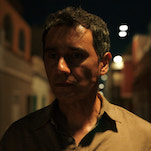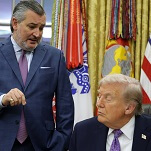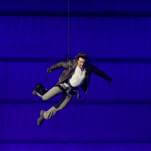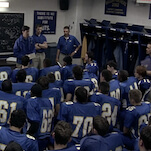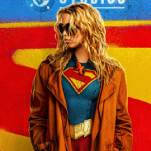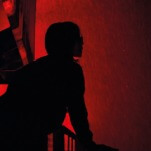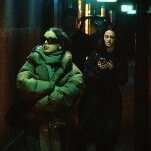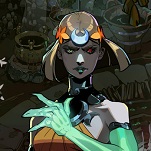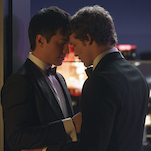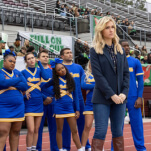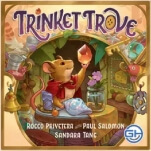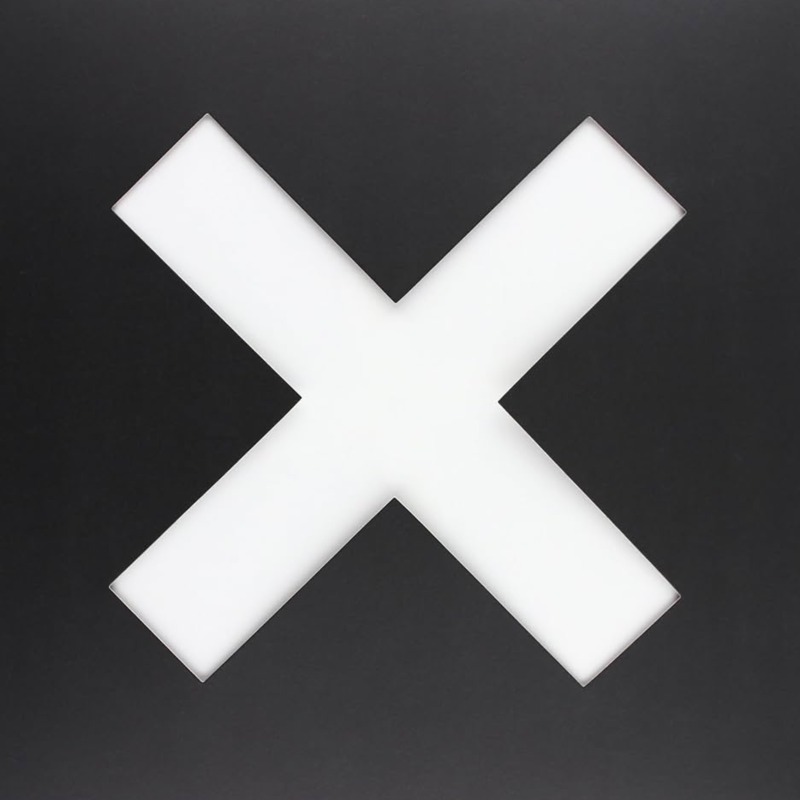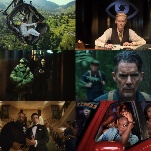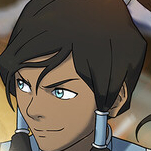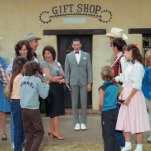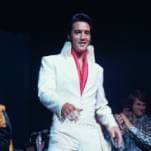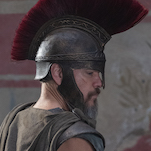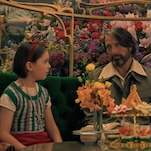The New Cult Canon: Battle Royale
For those of us who live in North America, Kinji
Fukasaku's youth-oriented bloodbath Battle Royale doesn't officially exist,
though the legions of cultists who have seen special screenings or own
bootlegged or imported DVDs know otherwise. There's always been a huge audience
for it here in the States, and references abound in American pop culture, from
Quentin Tarantino's casting of evil schoolgirl Chiaki Kuriyama as Gogo Yubari
in Kill Bill
to The Flaming Lips' use of Battle Royale footage as a backdrop for its Yoshimi
Battles The Pink Robots tour. Yet for a variety of reasons, the film has never been
distributed in the U.S. or on non-import DVD, leading some to speculate,
falsely, that it was banned here. The real story is actually much more
complicated to sort out.
There was a potentially enormous audience in the
U.S. for Battle Royale, but a conflation of factors kept it off screens. The biggest
problem was that the Japanese label Toei wanted more money for it ($1-$2
million upfront) than anyone was willing to give, and tougher still, the
company expected a wide release along the lines of Crouching Tiger, Hidden
Dragon. I
think that for the right distributor, those conditions were actually something
of a bargain, judging by Battle Royale's runaway popularity as a book, a manga
line, and a film in Japan. Trouble is, the right distributor didn't and doesn't
exist. The only distributors capable of releasing the film on a Crouching
Tiger
scale are the boutique arms of major studios like Sony and Disney, and the
film's premise of 15-year-old kids fighting to the death was way too toxic,
especially in a country rife with school shootings. There was no guarantee that
the ratings board would play along, either; though the MPAA isn't known for
handing out NC-17 ratings for violence alone, it seems likely they'd have
singled this movie out. A smaller, independent distributor might have been able
to adopt the film, but exhibition on more than just a handful of arthouse
screens would have been highly unlikely, given the subject matter. (The only
possible middle-of-the-road exception is Lionsgate, an independent with the capital
to release such a movie on a large scale, but clearly that didn't happen,
either.)
I first saw Battle Royale at a one-night-only
screening at Facets Cinematheque here in Chicago. There was a special, higher admission
price for the film, and a rare sell-out crowd in attendance, but even so, it was
my understanding that Facets was still showing it at a loss. I was later
shocked to discover that Tartan Asia Extreme had released a high-quality
import-only DVD designed specifically for NTSC players, but it says something
that I got my copy at Amoeba Records in San Francisco, not at the local Best
Buy. It's much easier to see now, but as a cult phenomenon, there's still sort
of a backroom, secret-handshake quality to the film, and that's added a layer
of mystique that nearly makes up for its lack of mass-market accessibility.
As high concepts go, Battle Royale hits the sweet spot: It's Lord Of The Flies
meets The Most Dangerous Game meets perhaps the cruelest year of teenage life,
which would have a Darwinian quality even without the aid of axes and
semi-automatics. Add to that ultra-violence, Japanese schoolgirls, and Takeshi
Kitano, add water and stir, and voila, you have the ingredients for an instant
cult classic.
Based on Koushun Takami's wildly popular
book—which I'm ashamed to admit I haven't read—the film taps into
millennial anxieties about what the nation's youth have in store. In a
near-future police state, the government has passed a law called the Millennium
Educational Reform Act (otherwise known as the "Battle Royale Act") designed to
suppress teenage rebellion. The law sounds like the most entertaining reality
show never made: Every year, a random class is rounded up on a deserted island
and forced to slaughter each other until one person remains. In order to ensure
they do as they're told, all the students are drugged and fitted with necklaces
that monitor their pulse and location, and will explode if they hide away in
constantly shifting "danger zones" on their maps, or if more than one of them
survives after a three-day period. In this NSFW scene, a new group gets their
instructions from a former teacher—played by the steely Takeshi Kitano—and
from a bubbly video tour guide who explains the rules. (Rule #1: If you're ever
forced to stand on tarped-over floor, keep your mouth shut.):
Once Kitano resumes the video, it's explained that
the 41 students present are each to receive a "survival kit" that includes
food, water, a map, a compass, and one weapon, which will range from a machine
gun to a pot lid. One by one, they dash off into the night, forced to come to
terms with their roles as guinea pigs in a sadistic sociological experiment.
Some quickly embrace the inevitable, including a kid who tries picking off his
fellow students with a crossbow immediately after leaving the building. Others
refuse to participate in the bloodletting, and commit suicide instead. Still
more form tentative alliances, like techies who try to hack the computer
monitoring system and instigate a mini-revolution, or girls who hole up
peacefully in a lighthouse. Then there are a couple of strange, glowering
"transfer students," who look considerably older than the other kids and have
unknown agendas.
Outside the fray are a pair of sweet-natured
peaceniks named Shuya (Tatsuya Fujiwara) and Noriko (Aki Maeda), armed with a
pot lid and a flashlight, respectively. They care about each other and are
determined to survive together, in spite of the harsh reality that one of them
will have to be killed in order for the other to live. Needless to say, this is
not the foundation for a trusting relationship, especially once one of the
transfer students, the unusually resourceful Kawada (Taro Yamamodo), becomes
friendly with them. Shuya and Noriko can only dodge the inevitable for so long;
when it comes time to kill or be killed, how do they preserve their honor and
innocence, let alone their lives?


